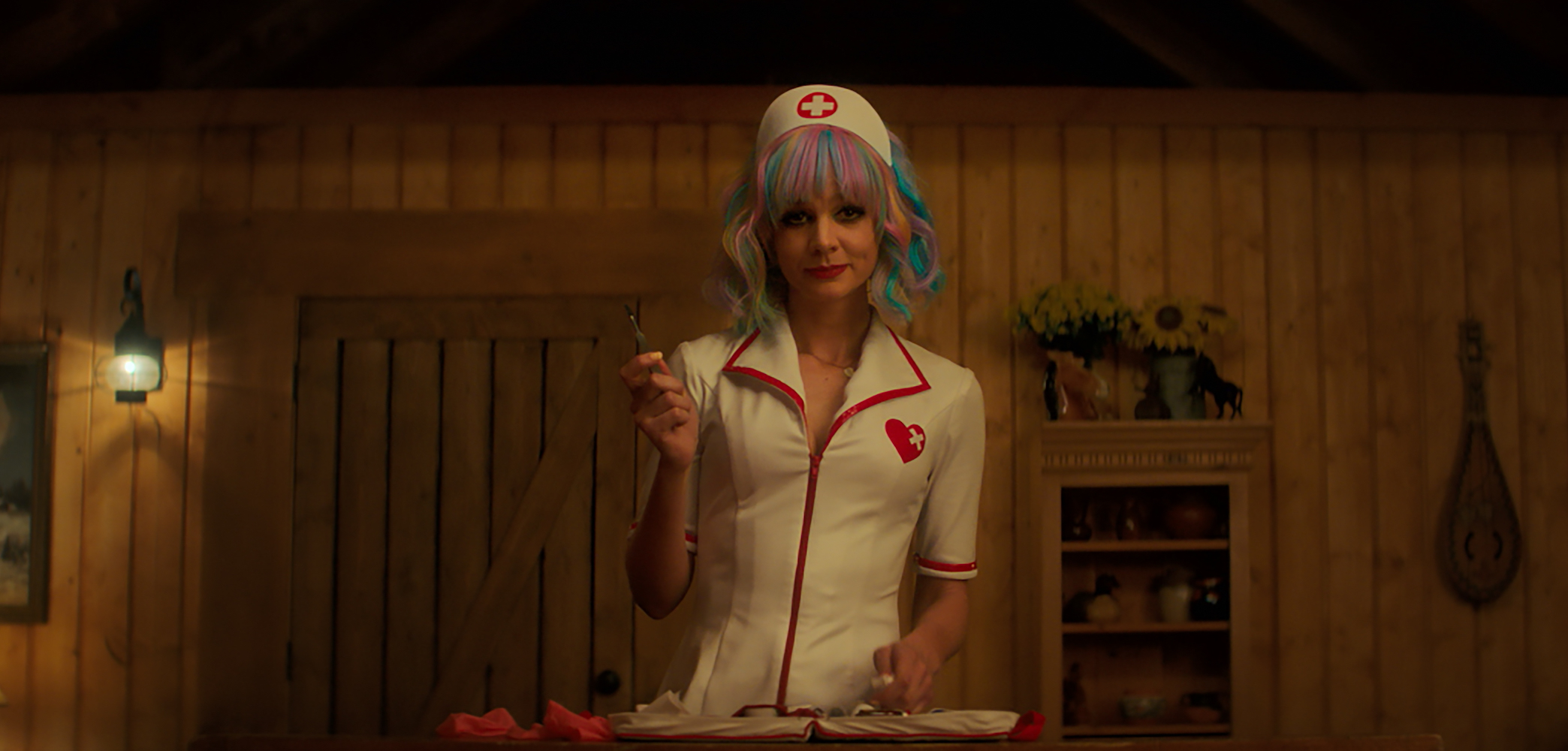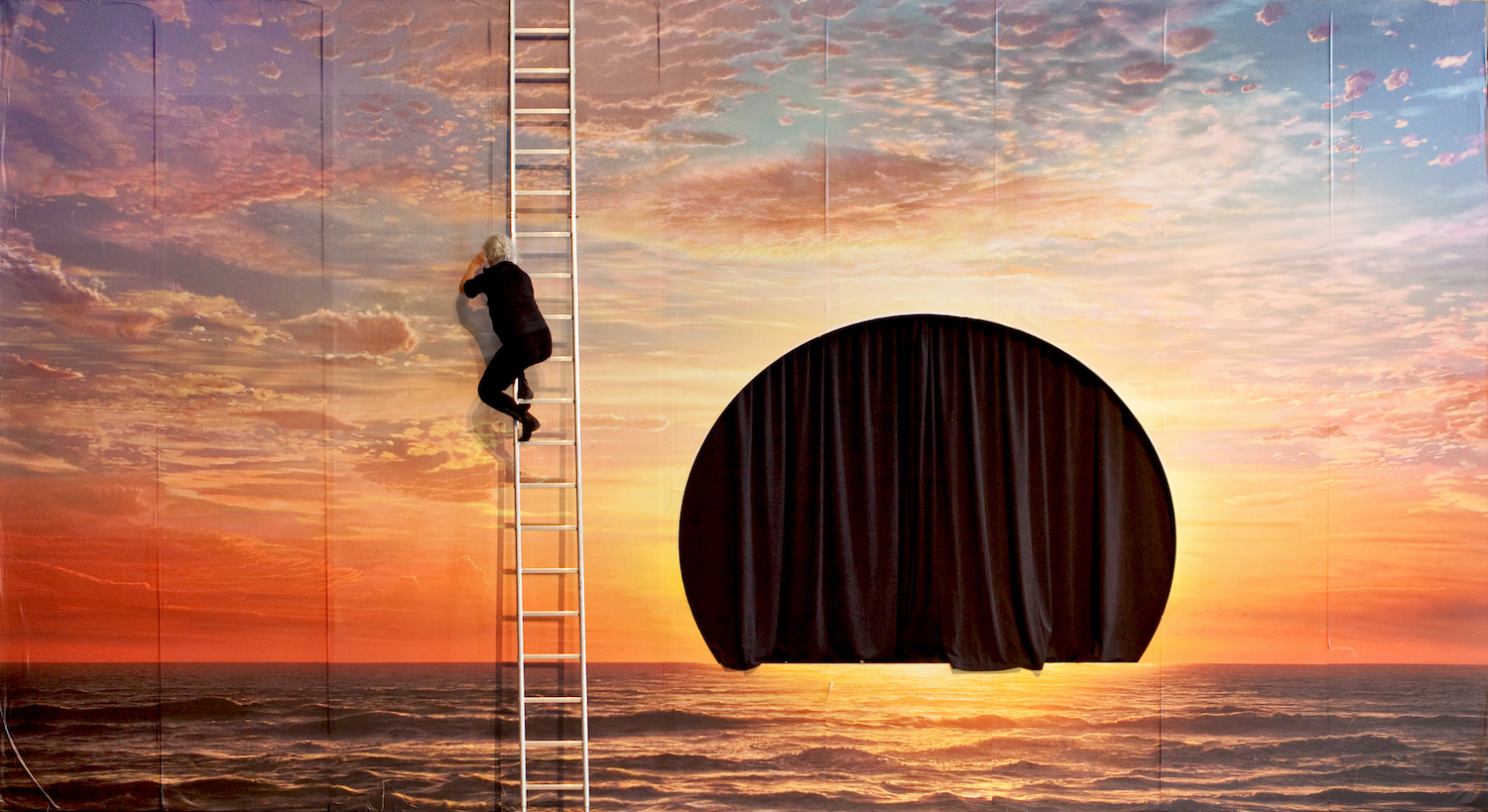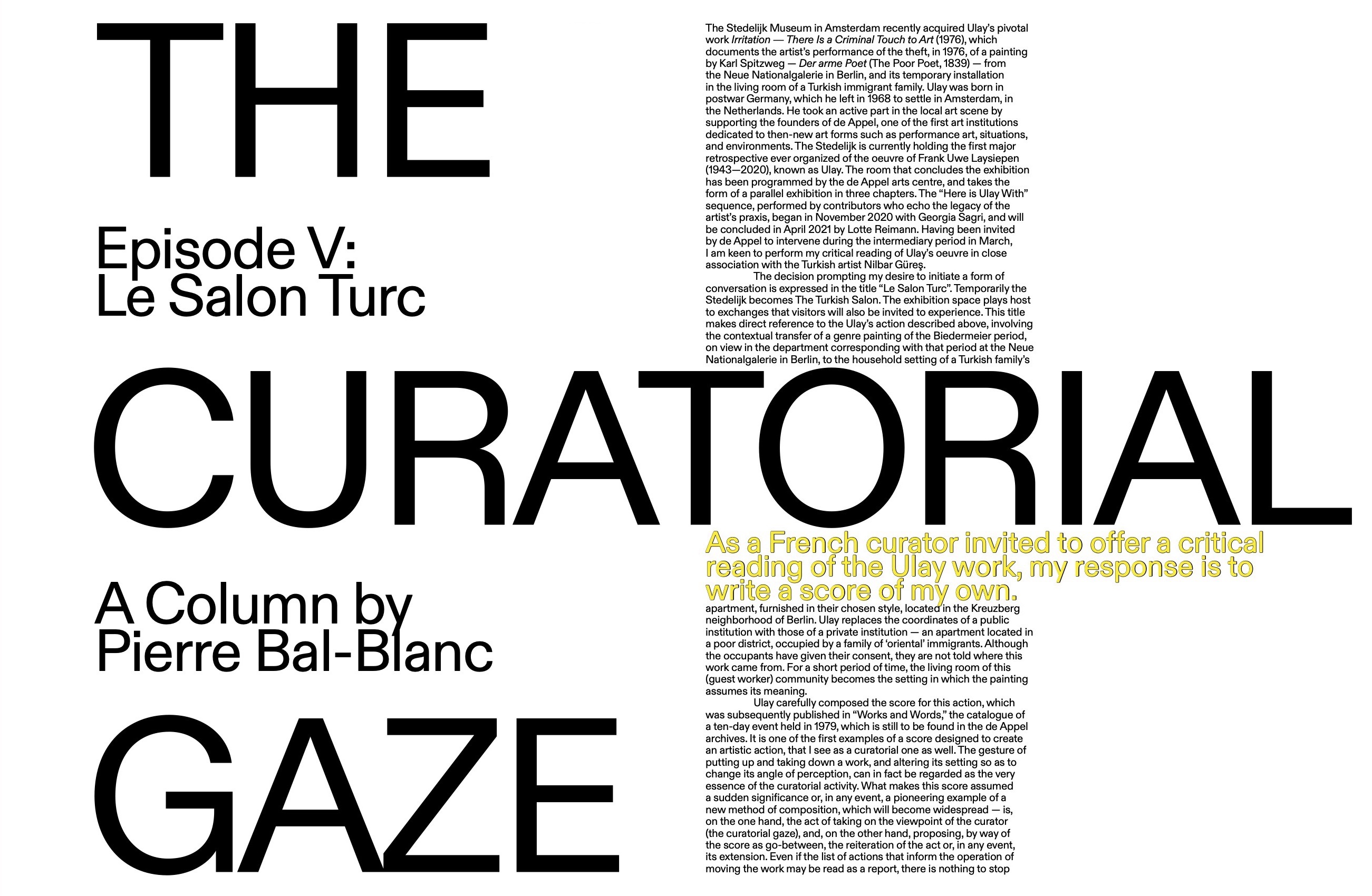The systems of governance that Michel Foucault and Deleuze & Guattari taught us to identify as “sovereignty,” “discipline,” and “control” correspond with those that the history and sociology of art identify as the classical age (the Renaissance), modernity, and the contemporary. The first formation of sovereignty corresponds to absolute monarchy, the second to the period of revolution, while the third, our present day and age, is based on a biopolitics of populations. Thus, there are three ways of drawing the outlines of a subject of law complying with different legal forms.
Sovereignty works by sampling and deduction: the subject of law is god, the creator.
Consider the dismembered discursive figures in the finalistic anatomical illustrations of Andreas Vesalius (1514–1564), which express a vitality within a landscape informed by a rural life. The disciplinary society, for its part, subjects to a series of given operations a smallish human host, caught within assignable boundaries. It is no longer a matter of sampling and deducting but of putting forces together. At the artistic level, it is no longer the hereditary principle of creation that predominates, but a process of begetting in which the readymade will be the ultimate manifestation. It was during this disciplinary formation that the universal notion of man (and artist) and the legal form “man” (we should say “human”) came into being. The biopolitics of populations comes to the fore when the law sets itself up to manage life, Foucault tells us, in whatever multiple open forms. The subject of law will be the living factor in man, no longer the god or the person within man.
A biopolitics of populations predominates over a political anatomy of bodies (and a population no longer comprises just human beings, but also vineyards, grain crops, livestock farming, etc.).
With “biopolitics” it is the performative that, in its turn, takes precedence over the readymade by generalizing a principle of production by delegation (protocol, score, etc.). If the subject of law is the living factor, it is no longer in any way the status of the demiurge creator that predominates, but rather that of the controller or moderator which the curatorial function (the curatorial gaze), assumed willy-nilly by the artist, curator, or viewer, expresses with the greatest keenness. The philosopher of Discipline and Punish came up with a detailed description of the architectural archetype of the theater, which lends structure to sovereign rule, that of the disciplinary society organized by panopticism; but he never really achieved the concrete translation of the architectural model of the biopolitical age.
I propose to look at the “free plan” and the Dom-Ino house defined by Le Corbusier in his “Five Points of Architecture” (1926) as a generalizable operative model, in the same way that Foucault considered the theatricalization function of sovereign rule and the principle of panopticism as a disciplinary technology.
Supporting walls and windows were always the obstacles in the way of dealing with the plan. The free plan, with its new technique of piles, reinforced concrete, and glass for large windows, opened the way to endless and extraordinary treasures for the invention of a new plan. From the enclosure of the rigid frame of load-bearing walls surrounded by a masterly and symmetrical façade, we proceed to an open surface with moveable partitions punctuated by an architectural promenade. There is no longer any dialectical relation between interior and exterior; there is an urban grid that introduces the notion of “environment” (milieu). It is important to understand these sovereign-disciplinary-biopolitical systems being overlaid upon each other without replacing one another. Which is tantamount to saying that they are simultaneously operational in a more or less intense way in arrangements, systems, roles, institutions, and tools; but biopolitical governmentality nevertheless enjoys predominance in our day and age. The conceptual tool offered by the free plan, whose architectural praxis has become widespread and includes its current virtual and dematerialized form, makes it possible, in my view, to reply more precisely to issues, widely discussed over the past few years, having to do with the presence of performance and dance in museums and in relation to archaeology, and the definition of space that is suitable for accommodating performative practices (Claire Bishop and Dorothea von Hantelmann).
There is no cause to celebrate the biopolitical regulation that promotes the curatorial and the performative, lament disciplinary technology and its principle of virtuosity, or shed tears over the loss of creativity in the sovereign realm.
The free plan is imposed upon us; it is not a choice. It is simply important to know how to recognize it in order to understand it, as Henri Lefebvre did in The Production of Space (1974). Its use for performative and curatorial artistic activities can only be understood in a critical manner, at the risk of ratifying its neoliberal rationality which excludes all other alternatives. And this, unfortunately, is what many “dances in museums” and performances have wittingly, or despite themselves, celebrated in recent years. To better grasp this attitude, we can refer to Geoffroy de Lagasnerie’s book Penser dans un monde mauvais.1 Inspired by Judith Butler’s Adorno Prize Lecture “Can One Lead a Good Life in a Bad Life?” the author suggests reformulating problems by throwing off the rules of political anatomy. He proposes making new categories of perception outside of the established frameworks and breaking with certain methods of discussion that render the debate sterile. He puts forward an oppositional attitude rather than one that is in cahoots — a dysfunctional practice of thinking that is distinct from any cathartic activity, which merely ratifies the social order. He introduces it thus: “The introduction of an ethical perception into our approaches leads us to have an immediate relation with struggles. Unlike the disciplinary model, there are not two tempos in the production of oppositional knowledge. There is no ‘internal,’ ‘disciplinary’ discussion firstly, then, in a second tempo, the encounter with the ‘outside.’ There is no development of the work followed by involvement in the public place or in a dialogue with the public in its varying forms. The various forms of public are always there, always already there: it is in contact with them that knowledge is developed. And it is also to them that knowledge is immediately addressed and aimed.”
On November 24, 2017, i.e. about two months after the official closure of documenta 14, the choreographers Annie Vigier and Franck Apertet, of les gens d’Uterpan, presented Parterre at KVS (Royal Flemish Theatre) in Brussels. That performance was part of a body of work selected for documenta 14, but unlike the other pieces put on in Athens and Kassel during the exhibition, that performance stole away from the official schedule and from the dedicated venues of the event. Further still, the protocol of that performance put its commissioning party — in this instance documenta 14 — to the test of not having information about the place and date of its production. To complete what we might call a “dysfunctional practice,” the choreographers chose a theater and, unbeknownst to its management and those in charge of the spectacle, they unleashed into the auditorium the dancers of les gens d’Uterpan not once but twice before the performance began: the first time they were dressed, and the second time they were naked.
The anarchic freedom of movement that the work permitted, underpinned by those bodies, was communicated in a frenzied manner — creating much disarray among the theater’s proprietors — to an audience seated in rows, which is to say literally lined up on the tiers of seats.
It was this haphazard encounter of supple bodies and tamed postures in that suddenly objectivized liminal space that caused us to become aware that a theater’s stalls are a highly policed public place, even before the show starts.
Parterre, created in 2009 and commissioned by CAC Brétigny, located in the southern suburbs, was first put on at a theater in Vanves, in the west of Paris. Since then, some fifteen venues in Europe have been filled with the unexpected presence of a group of dancers brought together by the company, drawing on the human resources of the local environment. The protocol for that performance disarmed its commissioning party and its host of their intermediary prerogatives ahead of the project with the public and focused them on the tangible management of the performance’s effect on the audience. The face-to-face encounter between performers and public, during an extraordinary experiential period of time, referred the artistic operators, back-to-back, to their responsibilities with regard to the art in the process of being made.
For Paul Valéry,2 dancers, of either gender, have no outside; nothing exists beyond the system, which they form for themselves through their actions. Dance seemed to him like a sensation-creating group making its very own dwelling. The body that dances seems to be unaware of its surroundings; it encloses itself within a time span that it begets. It is concerned solely with itself and with a paramount object from which it separates or delivers itself, to which it reverts. This is the earth, the ground, the solid place, the surface on which ordinary life treads. But this detachment from the environment is decisively opposed to that of our action in the practical world. For Paul Valéry, dance was an action that is deduced, then released from ordinary and useful action, and, finally, opposed to it. But what is happening almost a hundred years after the definition given to dance by Valéry? The disciplinarization of the praxis tames and assigns movement to a specialized place, and prevents bodies from extricating themselves from any administration of live performance, so as to keep its economic model — which is albeit in the throes of becoming obsolete — within the unique format of the fourth wall. Parterre restores to dance its function of sharing — which, by culminating in a ball, grand ballet used to have in the time of absolute monarchy — but by secularizing its act. Indeed, the rules of etiquette dictated the first part of the court ballet, reserved for the royal family, followed by a second part, with the aristocratic audience being incorporated in the general movement. Thus, Parterre democratized the single-function space of the tiers by giving it back an open use, breaking with the private ownership of assigned and individualized seats. The performance deconsecrated the stage/auditorium division by breaking with the conventions of representation on the geology of the sovereign and disciplinary grounds which introduced them. Parterre does not simply destroy the fourth wall by freeing up the watertight phenomenon between stage and auditorium; the performance folds the stage over the auditorium, refashioning collective self-consciousness and group awareness. The group, which is a sensitive crowd, without which the “individual” remains an abstraction. Parterre is a profanation in the sense that the performance breaks with the optical arrangement introduced by theatrical theology and included by architecture in the stage/auditorium separation. The dancers’ limbs and muscles, out of synch with those of the spectators, enact the collective/individual relation in a tactile way.
Their motricity acts on a free plan, that of a population, which is to say that of the living world. But it is through the diversion of this oppositional attitude, rather than an attitude in cahoots, toward its commissioning party and its host, that Parterre, in reality, completes its orgy of bodies in a critical way, engendering its time frame like a fiction lived through.




